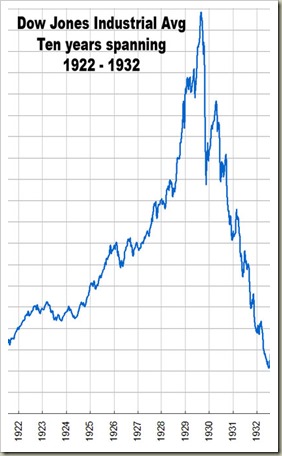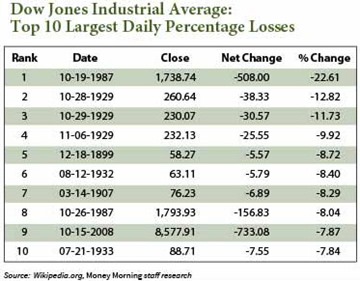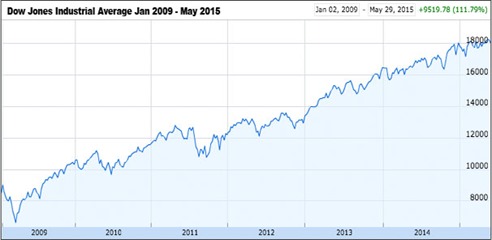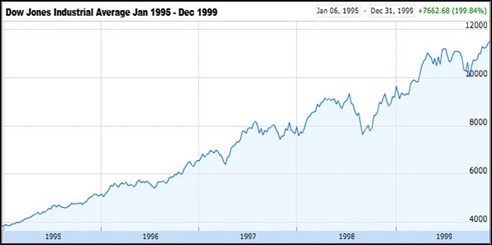Investing: Bull Markets and how long can they run?
Posted By RichC on May 31, 2015
If you’ve been watching the “easy money” policies from central banks around the world (following the U.S. Fed’s lead), you may being wondering just how much money can be infused by government without suffering an economic calamity?
So far, those investors “borrowing” at low interest rates in order to participate heavily in the stock market have looked pretty smart. Their decision to leverage assets after the recession have been paying off handsomely. For those with something to leverage (those in the upper income brackets), “happy days are here again.”  Who earning double-digit returns wants this party to end? Those doing well are hesitant to call a top for this bull market … but it would be wise to pay attention to history … I’m just sayin’. A quick look at “normal” market runs might take note of what can’t happen after a long fast climb (late 1990s and past 6 years are the two charts above followed by the 1922 – 1932 “story chart” to the left).
Who earning double-digit returns wants this party to end? Those doing well are hesitant to call a top for this bull market … but it would be wise to pay attention to history … I’m just sayin’. A quick look at “normal” market runs might take note of what can’t happen after a long fast climb (late 1990s and past 6 years are the two charts above followed by the 1922 – 1932 “story chart” to the left).
After World War I the manufacturing industry in the United States was on a roll. The 1920s was “roaring.” Investors couldn’t lose as a speculation bubble grew and every invested dollar grew. Over 500 manufacturing and trading companies in 1926 saw their net profits increase over 35%. A the 9 years of prosperity unknowingly neared an end, the stock market had increased ten-fold and in its final summer (1929) the Dow Jones gained more than 20%. President Herbert Hoover declared that “we in America today are nearer to the final triumph over poverty than ever before in the history of any land.” His campaign slogan in 1928 famously boasted “a chicken in every pot and a car in every garage.” People poured their savings into the market and even borrowed to invest. Before Black Tuesday, the Wall Street Crash of October of 1929, two out of every five dollars a bank loaned were used to purchase stocks ($8.5 Billion was on loan … more than the entire amount of U.S. currency in circulation at that time).
 Why is this of concern? Well because 1929 wasn’t the only crash or “market correction.” Not ever downturn was uncontrolled and economists may have a few more tools in order to soften the blow (image right – a reminder that percentage wise 1929 was not a lone happening). Just when people start to think like Herbert Hoover (above) a surprise trigger starts the dominos toppling. It’s always painful for those who have their life saving and have leveraged assets to be heavily invested. Has the top been called? Only history will tell. One thing I do know is that America is living on borrowed money. We owe nearly $19 Trillion and have unfunded entitlement programs that will soon be needing even more money. Medicare, Social Security, Government Pensions and Obamacare are all being promised. Are any of them really solvent in an era of slow economic growth, underemployment and increased world economic competition?
Why is this of concern? Well because 1929 wasn’t the only crash or “market correction.” Not ever downturn was uncontrolled and economists may have a few more tools in order to soften the blow (image right – a reminder that percentage wise 1929 was not a lone happening). Just when people start to think like Herbert Hoover (above) a surprise trigger starts the dominos toppling. It’s always painful for those who have their life saving and have leveraged assets to be heavily invested. Has the top been called? Only history will tell. One thing I do know is that America is living on borrowed money. We owe nearly $19 Trillion and have unfunded entitlement programs that will soon be needing even more money. Medicare, Social Security, Government Pensions and Obamacare are all being promised. Are any of them really solvent in an era of slow economic growth, underemployment and increased world economic competition?
As the Scout Motto states, “Be Prepared.”


Comments